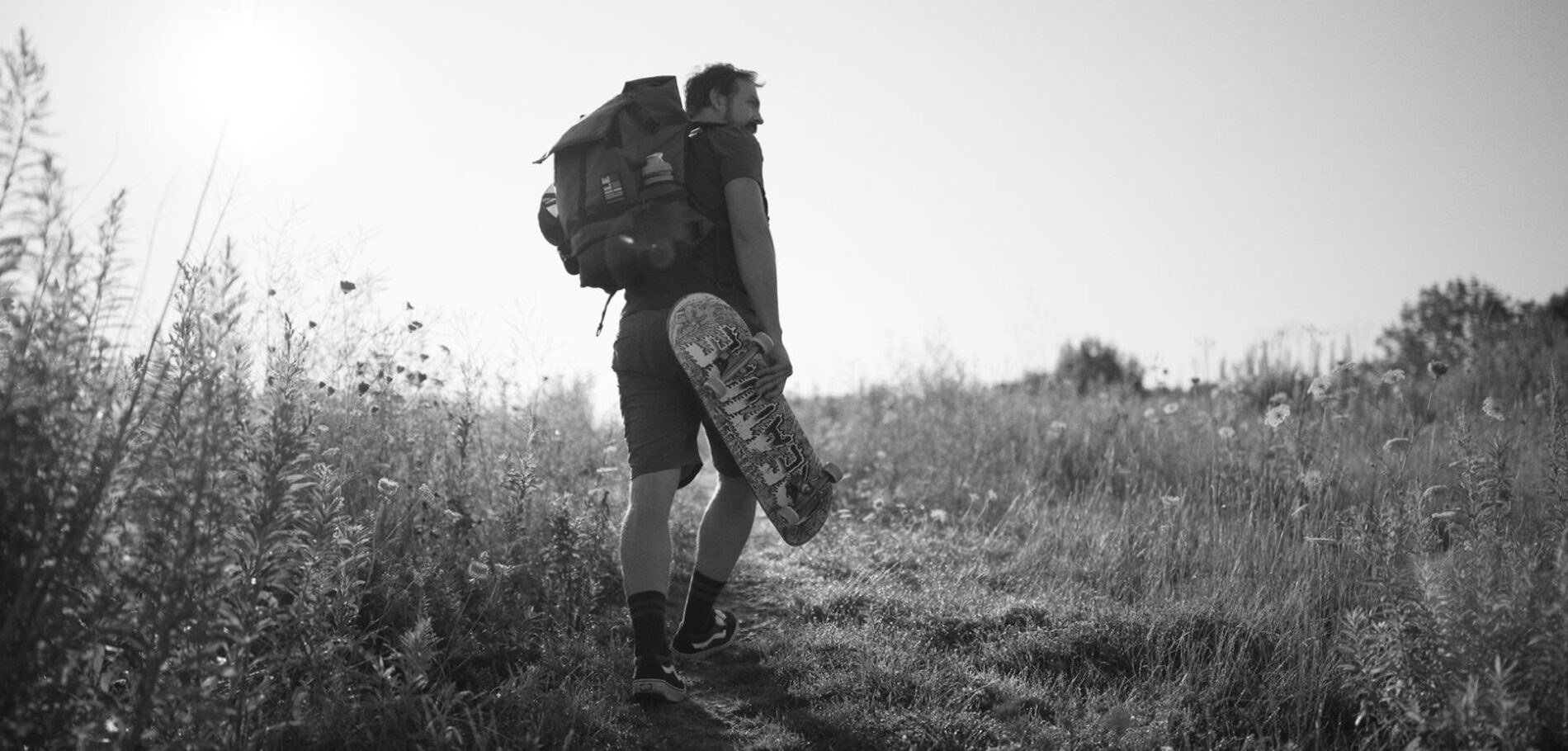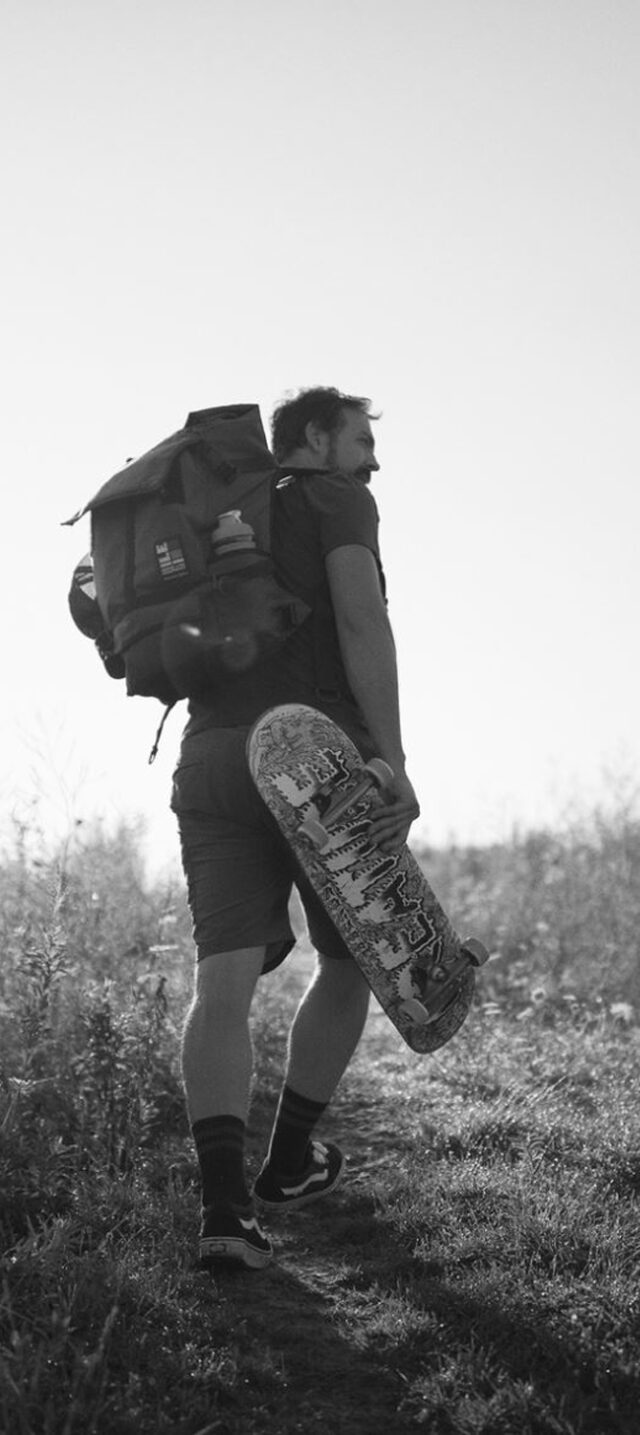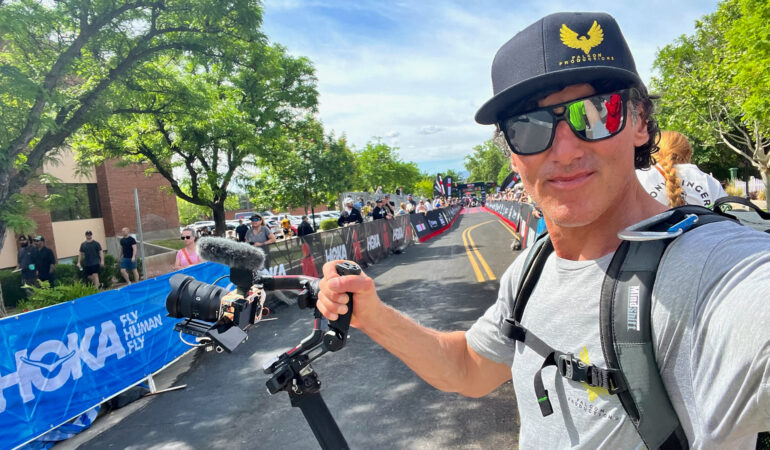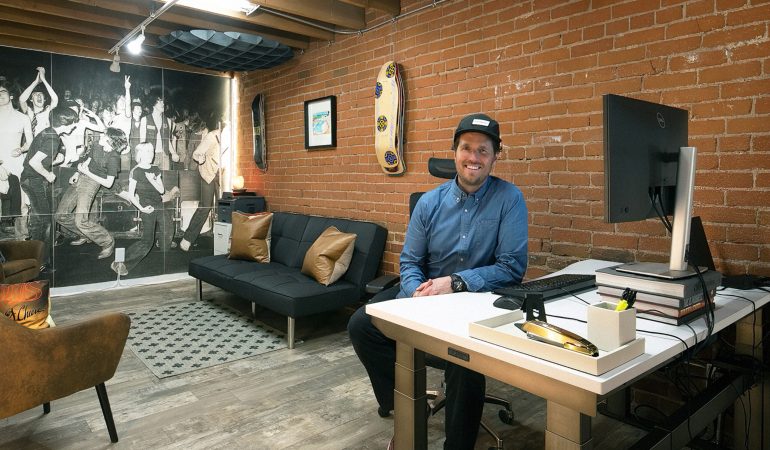Meet a Creative: Tavis Coburn
Artist | Designer
Home Base / Toronto, Canada
Activities / Skate, Surf, Snowboard
Why Tavis:
If you think these are tumultuous times for the creative business—and they are—just know that you can adapt. The artist and designer Tavis Coburn is living proof. Beyond the countless accolades and body of work, the through line of his career is about changing with the times while maintaining creative integrity.
His backstory isn’t all that unique if you know any artists. Tavis’s family moved around when he was a kid growing up in Canada. Living out of boxes and always being the new kid pushed him to art, creating worlds where he felt accepted.
After high school he studied art in Toronto, but found the structure stifling. His next move was to head to British Columbia to skate in Vancouver and snowboard at Whistler. But before he did, and unbeknownst to his parents, he applied to the ArtCenter College of Design in Pasadena. ArtCenter is one of handful of North America’s prestigious art and design schools. He got in. His first impression upon arriving was the student work on display did not look like student work. That, and the alumni were the who’s who of professional designers, photographers, and filmmakers.
After graduation, Tavis entered a booming market for illustrators courtesy of a booming LA music business that was printing money because of the wide margins on CDs. The record labels employed entire floors of designers for cover art, posters, and flyers that went out with singles to DJs.
Tavis broke in by taking chances: “I bet the farm on my work,” he says. “It was all screen printed back then, more street art and Basquiat in feel; heavy on pop references from growing up in the ’70s, ’80s, and ’90s. A designer who wanted to become an art director with a record company championed my work. Before long my illustrations were on their office wall. And not long after that I was working for every record company in LA.”
Then came 1999 and Napster. Free music devastated the record business. Suddenly all those designers—the people who hired the illustrators were gone.
But Tavis had already prepared for a pivot.
Every illustrator and photographer of that era wanted to get into Rolling Stone or Time. And in 1998, Tavis had a cover of Time mocked up that made it to the printed proof stage—until the Monica Lewinsky scandal broke. In the years that followed, his work, including a spread in Entertainment Weekly in 2001, appeared routinely in Time, Rolling Stone, ESPN, The New Yorker, Outside, Popular Science, Skiing, Harpers, Road & Track, and Car and Driver to name only a few.
“Magazine work became my bread and butter, and I loved it,” says Tavis. “They used to pay within 30 days. You could plan and budget the work. And every job was unique. And especially with Rolling Stone, original illustration was part of their identity. The art directors understood how to work with illustrators.”
You know where this is going. The magazine work grew spotty before the pandemic, but Covid nearly killed it off for writers, photographers, and illustrators too.
Tavis’s next pivot, to commercial work again, was more serendipitous. His illustrations for the car mags led to clients like McLaren, BMW, Audi, Formula 1, and more.
For those clients, Tavis’ work is far more sophisticated than it was when he was making screen prints for record labels—he’s building cars digitally from CG and VFX software.
But every project still allows him to immerse himself in a world of his making. “I didn’t study design because I wanted to create one style of work over my career,” says Tavis. “Working with editors and clients with different needs lets me challenge myself. A stadium wrap is as different as a race car as an editorial illustration is from a skateboard deck, but all those stories can be told visually if you take the time to think about who the customer is and what their needs are.”
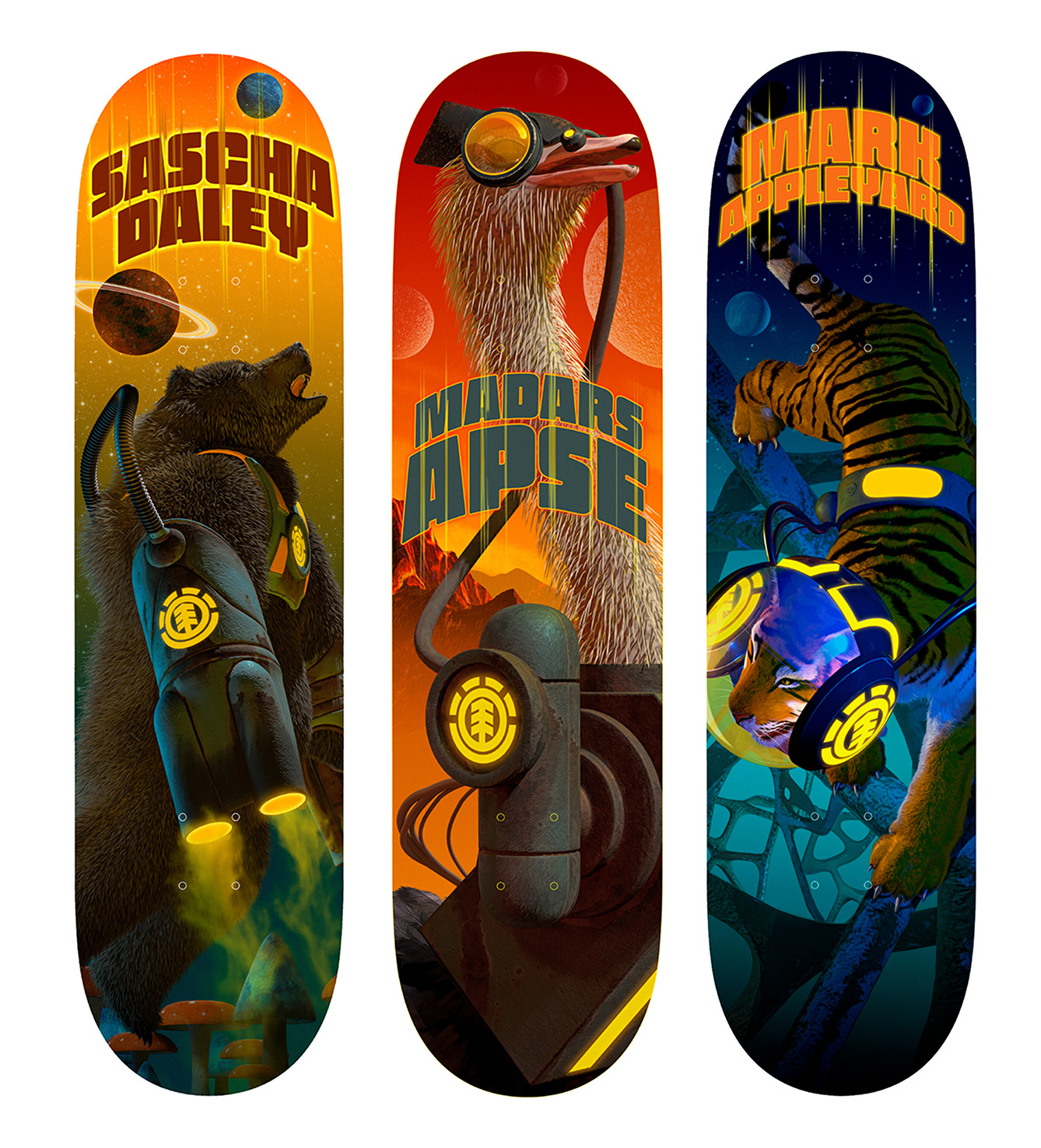
Tavis’s Long Side Hustle
While attending ArtCenter, Tavis connected with a snowboard company. “Outside of art, skateboarding was my entire life growing up, and boardsports were an extension of that. Pretty soon the broflow network kicked in and over my career I’ve designed decks for Joyride, Dwindle, Darkstar, Santa Cruz, and Lib Tech.”
Specialized Skills:
Tavis met his wife—also a Canadian—in LA. Before the couple moved back to Toronto, he sold his screen printing gear, which, with 50 screens, drying racks, and a 500 pound exposure table was big enough to fill a studio.
On the drive back he was torn up wondering how he would be able to work. That worry mothered invention. “I figured out a weird way to make a digital screen print using Photoshop and a Frankenstein formula I came up with. It forced me to adopt technology. Sketch Up, Cinema 4D, Maya. For a while I was building everything in Houdini and it’s still my workhorse, and now I’m using Unreal Engine as well. I teach a computer class for art students on computers. It’s just another medium for art. I couldn’t do what I do today with motion for films or automotive without these tools.”
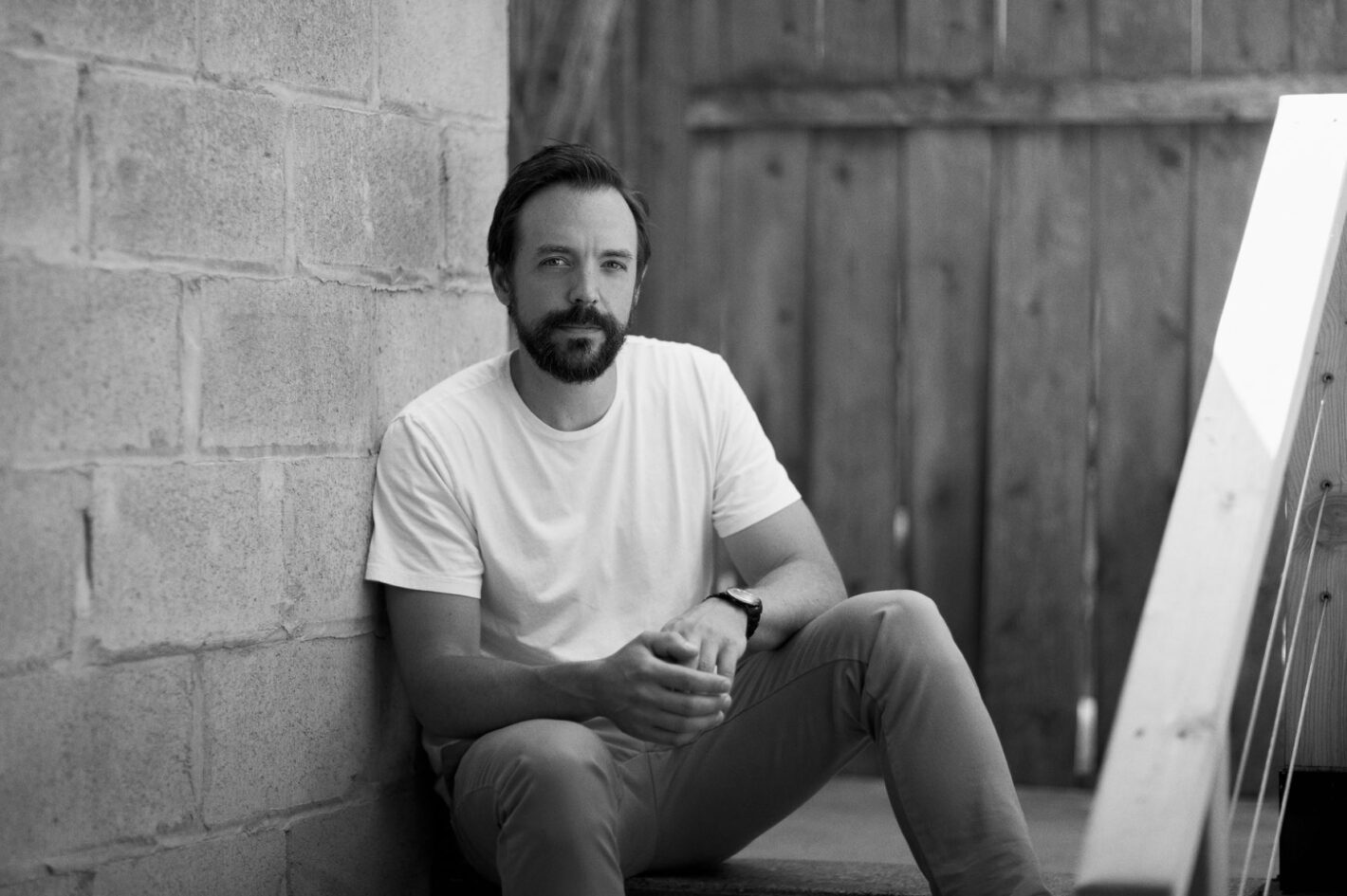
What's Next:
Recently Tavis launched WRAITH, a small, technology-focused motion design studio. Look for his artistic eye and steady hand with tech in the work coming out of that shop.
